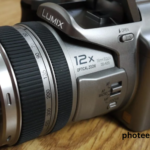When it comes to photography, one of the most important aspects to consider is the depth of field. Depth of field refers to the range of distance within a photograph that appears sharp and in focus. It is a powerful creative tool that allows photographers to control what elements of an image are in focus, thereby influencing the overall composition and visual impact. Understanding how to control depth of field can greatly enhance the quality of your photographs and take your photography skills to the next level.
Importance of Depth of Field in Photography
Depth of field plays a crucial role in photography as it allows photographers to guide the viewer’s attention and create a sense of depth and dimension within an image. By controlling what is in sharp focus and what is blurred out, photographers can direct the viewer’s gaze to the main subject of the photograph. This can be particularly effective in portrait photography, where a shallow depth of field can isolate the subject and create a beautiful, dreamy background. On the other hand, in landscape photography, a deep depth of field can ensure that all elements in the scene are sharp and in focus, creating a sense of vastness and detail.
Factors that Affect Depth of Field
Several factors influence the depth of field in a photograph. One of the primary factors is the aperture setting. Aperture refers to the size of the lens opening, which controls the amount of light entering the camera. A wider aperture (smaller f-number) creates a shallow depth of field, while a narrower aperture (larger f-number) results in a deep depth of field. The distance between the subject and the camera also affects the depth of field. The closer the subject is to the camera, the shallower the depth of field will be. Additionally, the focal length of the lens and the size of the camera’s image sensor can also impact the depth of field.
Using Aperture to Control Depth of Field
The aperture setting is one of the most powerful tools photographers have to control depth of field. By adjusting the aperture, you can determine how much of the scene is in focus. When shooting with a wide aperture (smaller f-number), such as f/1.8 or f/2.8, only a small portion of the image will be in sharp focus, while the rest will be blurred out. This technique is often used in portrait photography to create a pleasing background bokeh and isolate the subject. On the other hand, if you want to capture a landscape with all elements in sharp focus, you would need to use a narrow aperture (larger f-number), such as f/11 or f/16. Experimenting with different aperture settings will allow you to achieve the desired depth of field for your photographs.
Techniques for Achieving Shallow Depth of Field
There are several techniques that can help you achieve a shallow depth of field in your photographs. As mentioned earlier, using a wide aperture is one of the most effective ways to create a shallow depth of field. Additionally, you can also get closer to your subject, as the distance between the subject and the camera affects the depth of field. Another technique is to use a longer focal length lens, as longer lenses have a narrower angle of view and tend to have a shallower depth of field. Finally, consider using a telephoto lens or a lens with a wide maximum aperture, as they are designed to produce a shallow depth of field.
Techniques for Achieving Deep Depth of Field
While a shallow depth of field can create stunning images, there are also times when you may want to achieve a deep depth of field. This is especially useful in landscape photography, where you want everything in the scene to be in sharp focus. To achieve a deep depth of field, you need to use a narrow aperture, such as f/11 or f/16. Additionally, you should make sure the camera is focused at a point called the hyperfocal distance, which is the distance at which everything from half that distance to infinity appears to be in focus. Using a wide-angle lens, focusing at the hyperfocal distance, and using a narrow aperture will allow you to capture images with a deep depth of field.
Using Focal Length to Manipulate Depth of Field
Another factor that can greatly influence the depth of field is the focal length of the lens. A longer focal length lens, such as a telephoto lens, tends to have a shallower depth of field compared to a shorter focal length lens, such as a wide-angle lens. This is because longer lenses have a narrower angle of view, which results in a smaller depth of field. On the other hand, wide-angle lenses have a wider angle of view, which leads to a larger depth of field. By understanding how focal length affects depth of field, you can choose the right lens for your desired effect and composition.
Tools and Techniques for Precise Depth of Field Control
To achieve precise control over the depth of field in your photographs, there are several tools and techniques you can employ. One of the most useful tools is a depth of field calculator, which can help you determine the depth of field based on your chosen aperture, focal length, and distance to the subject. Additionally, using a tripod can be extremely helpful, especially when shooting with narrow apertures and longer exposure times. A tripod ensures that your camera remains steady, reducing the risk of camera shake and allowing you to capture sharp images. Finally, consider using manual focus instead of relying on autofocus, as manual focus gives you more control over what elements of the image are in focus.
Examples of Stunning Depth of Field in Photography
To truly appreciate the artistry of depth of field in photography, it’s important to look at some examples of stunning images that showcase the technique. One example is a portrait photograph where the subject’s face is in sharp focus, while the background is beautifully blurred out, creating a sense of intimacy and focus on the subject. Another example is a landscape photograph where the foreground, midground, and background are all in sharp focus, capturing the intricate details of the scene and creating a sense of depth and vastness. By studying these examples, you can gain inspiration for your own photography and learn how to effectively use depth of field to enhance your images.
Conclusion
In conclusion, depth of field is a powerful creative tool that allows photographers to control what elements of an image are in focus, thereby influencing the overall composition and visual impact. By understanding the factors that affect depth of field, such as aperture, distance to the subject, focal length, and camera sensor size, photographers can achieve the desired depth of field for their photographs. Whether you want to create a shallow depth of field to isolate the subject or a deep depth of field to capture an entire scene in sharp focus, mastering the art of depth of field will greatly enhance your photography skills. So go out there, experiment with different techniques, and unleash your creativity to capture stunning images with depth of field.







